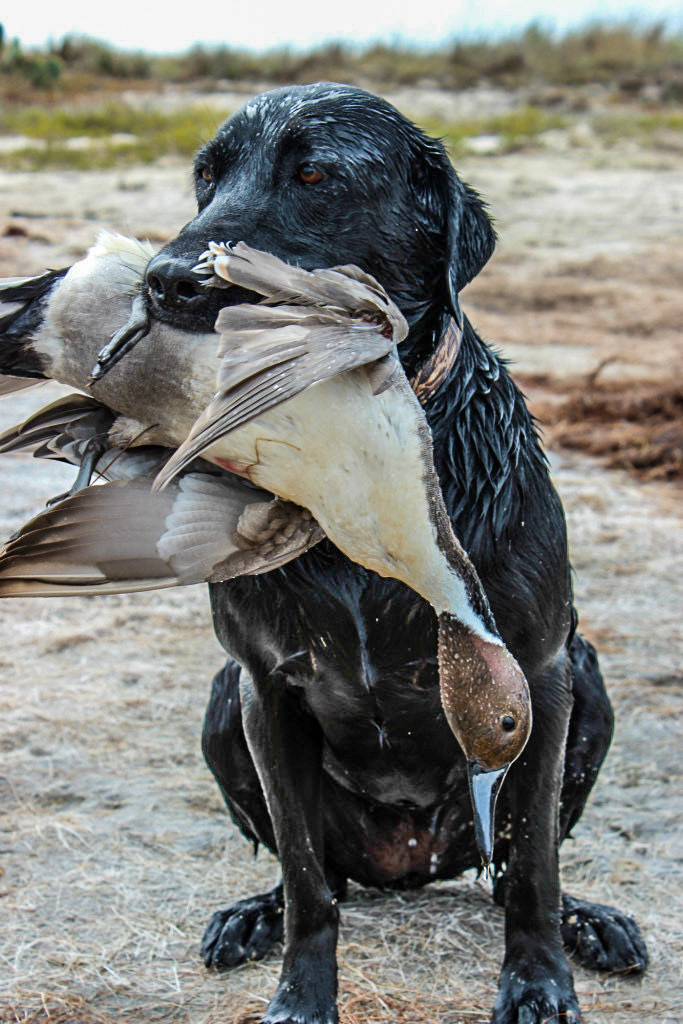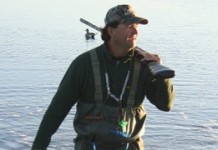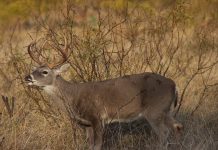
Biologists, landowners and especially waterfowl hunters always eagerly anticipate the annual duck population survey released each August by the U.S. Fish & Wildlife Service and Canadian Wildlife Service, hoping that waterfowl counts remain above board.
This year’s annual survey, released Monday, estimates the breeding duck population at 38.9 million, about a 6% decrease from last year’s count of 41.19 million. While that may cause some concern as a whole, the overall count still remains 10% above the long-term average. That being said, the 2019 survey is the first one since 2008 showing a dip below 40 million for the entire breeding population.
Highlights from the survey include:
- Mallards increased 2% to 9.42 million, 19% above the long-term average.
- Green-winged teal rose 4% to 3.18 million, 47% above the long-term average.
- American wigeon rose just slightly to 2.83 million, 8% above the long-term average.
- Gadwall rose 13% to 3.26 million, 61% above the long-term average.
- Shovelers declined 13% to 3.65 million, 39% above the long-term average.
- Blue-winged teal fell 16% to 5.43 million, 6% above the long-term average.
- Pintails fell 4% to 2.27 million, 42% below the long-term average.
Also of note, all three diving duck species surveyed showed declines. Redheads fell 27% to 730,000, putting them at the long-term average. Canvasbacks dropped 5% to 650,000, 10% above the long-term average. Scaup fell 10% to 3.59 million, 28% below the long-term average.
Kevin Kraai, waterfowl program leader for the Texas Parks & Wildlife Department, said that heading through August, the prognostications for waterfowl aren’t necessarily all that great. The dry, overly hot range conditions detrimental to many other species also will play a role in this year’s hunts.
“We knew that a large portion of the prairie potholes were going to be dry; pretty much all of prairie Canada was abnormally dry. Obviously that’s a huge part of the equation for waterfowl hunting as important as that area is and as large as it is,” Kraai said. “The good news is the Dakotas had an increase in overall water and the birds responded well to that. Talking to colleagues in North and South Dakota, not only was there record moisture in some places, they had very good production and good nesting success.”
As with other hunting pursuits in Texas, things can go from good to average to bad pretty quickly without water.
“Going into the spring, we were all looking really good with record moisture and even record flooding in East Texas, and since then, things drastically changed,” Kraai said. “Very dry and very hot is a bad combination heading into the summer before the season, but it’s actually interesting in one way. When we have really dry years, we actually record better waterfowl harvests and higher success rates because with less water on the landscape the birds don’t have as many places to go. Looking back at last year (with better moisture) we had lower success rates and birds just had more locations to go where they could avoid hunters. That wasn’t just in Texas but across the entire South.”
Kraai noted that there is a silver lining to all this negative news.
“All in all, this could be a good season heading through the fall and winter for duck hunters. The conditions should put ducks where the majority of hunters are,” Kraai said. “Additionally, in drier years, bay hunters on the Texas coast tend to have a better season. Those conditions push more pintails and redheads out into the bay, so that’s a positive for those hunters.”
Another silver lining to the waterfowl hunting outlook is the sandhill crane population, which continues to increase despite and increase in the overall harvest, biologists noted.
Texas Waterfowl Hunting Seasons
Ducks
North Zone
Regular season: Nov. 9 – Dec. 1, 2019 & Dec. 7, 2019 – Jan. 26, 2020
Dusky duck: Nov. 14 – Dec. 1, 2019 & Dec. 7, 2019 – Jan. 26, 2020
Youth-only: Nov. 2 – 3, 2019
South Zone
Regular season: Nov. 2 – Dec. 1, 2019 & Dec. 14, 2019 – Jan. 26, 2020
Dusky duck: Nov. 7 – Dec. 1, 2019 & Dec. 14, 2019 – Jan. 26, 2020
Youth-only: Oct. 26 – 27, 2019
High Plains Mallard Management Unit (HPMMU)
Regular season: Oct. 26 – 27, 2019 & Nov. 1, 2019 – Jan. 26, 2020
Dusky duck: Nov. 4, 2019 – Jan. 26, 2020
Youth-only: Oct. 19 – 20, 2019
Geese
East Zone
Light & dark geese: Nov. 2, 2019 – Jan. 26, 2020
Light goose conservation order: Jan. 27 – Mar. 15, 2020
West Zone
Light & dark geese: Nov. 2, 2019 – Feb. 2, 2020
Light goose conservation order: Feb. 3 – Mar. 15, 2020
Sandhill Cranes
Zone A: Oct. 26, 2019 – Jan. 26, 2020
Zone B: Nov. 22, 2019 – Jan. 26, 2020
Zone C: Dec. 14, 2019 – Jan. 19, 2020
Texas Waterfowl Bag Limits
Note: The only change from last year to upcoming migratory game bird seasons adopted by the Texas Parks & Wildlife Department will be a reduction in the pintail bag limit to just one per day.
Duck Bag Limit: 6/day in the aggregate to include no more than 5 mallards, of which only 2 may be hens, 3 wood ducks, 3 scaup, 2 redheads, 2 canvasback, 1 pintail, 1 “dusky duck” (mottled, black or Mexican-like) may only be taken after the first 5 days of the season in the respective zones. Mergansers: 5/day with no more than 2 hooded mergansers. Coots: 15/day. Possession limit is 3 times the daily bag limit for all migratory game birds except snow geese which have no possession limit.
Goose Bag Limit: 5 dark geese, to include no more than 2 white-fronted geese, 20 light geese (no possession limit on light geese).
Sandhill Crane Bag Limit: Zones A and B: Bag Limit: 3, possession limit 9; Zone C: Bag Limit: 2, possession limit 6





















